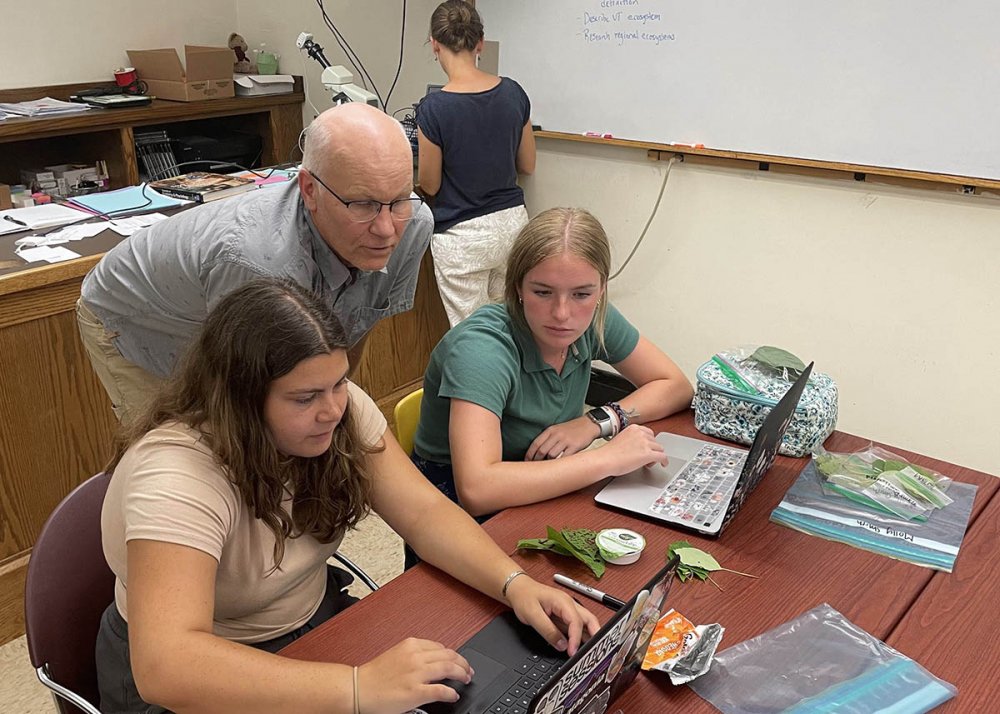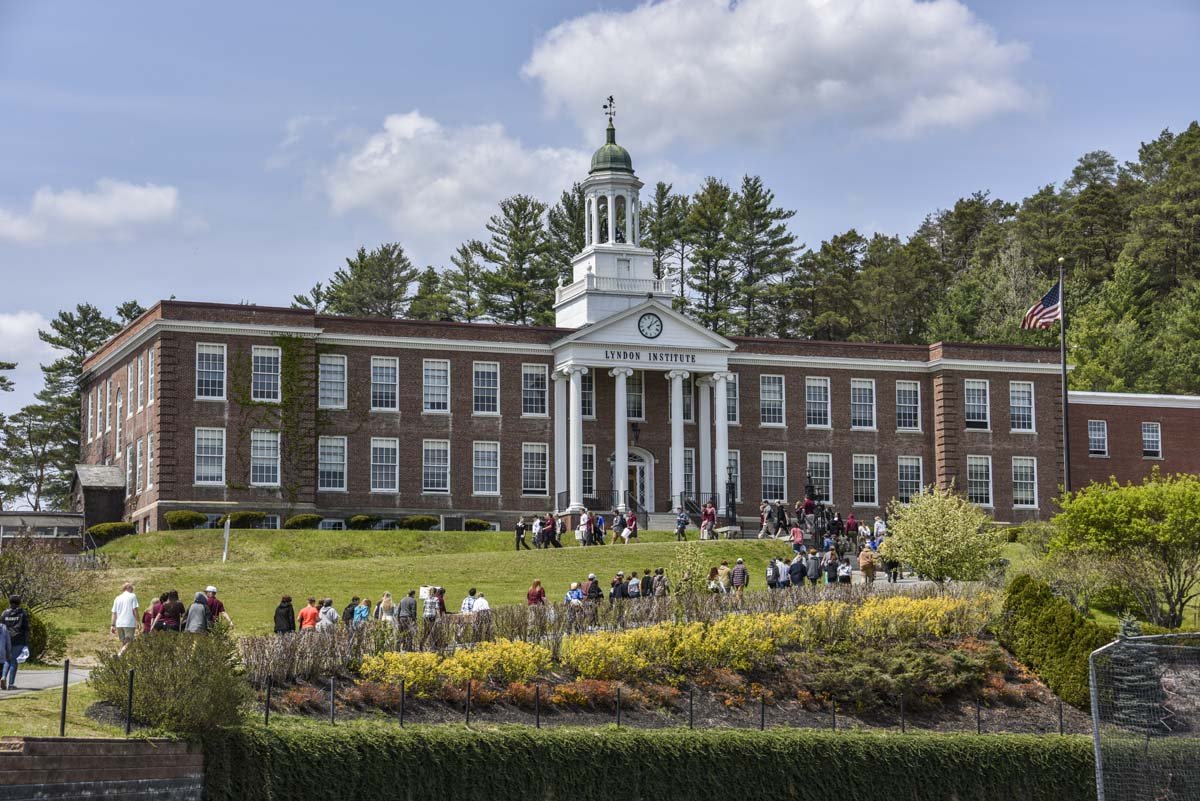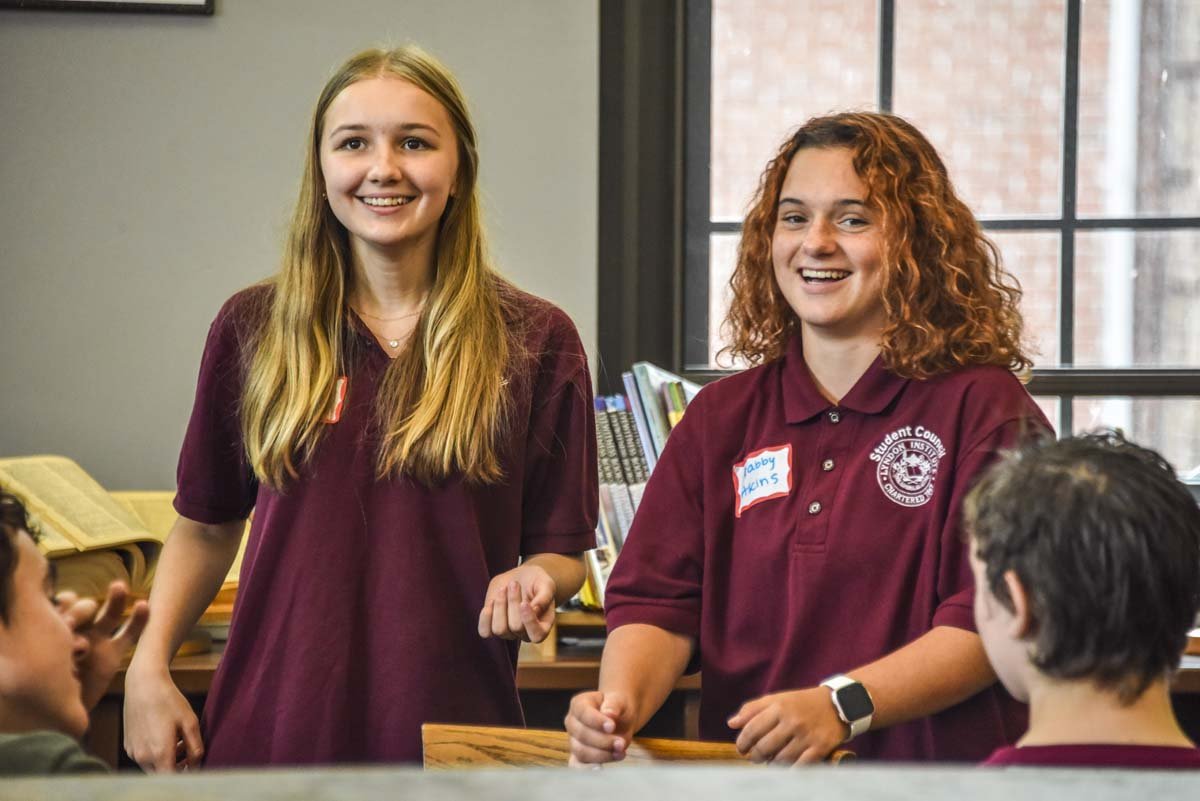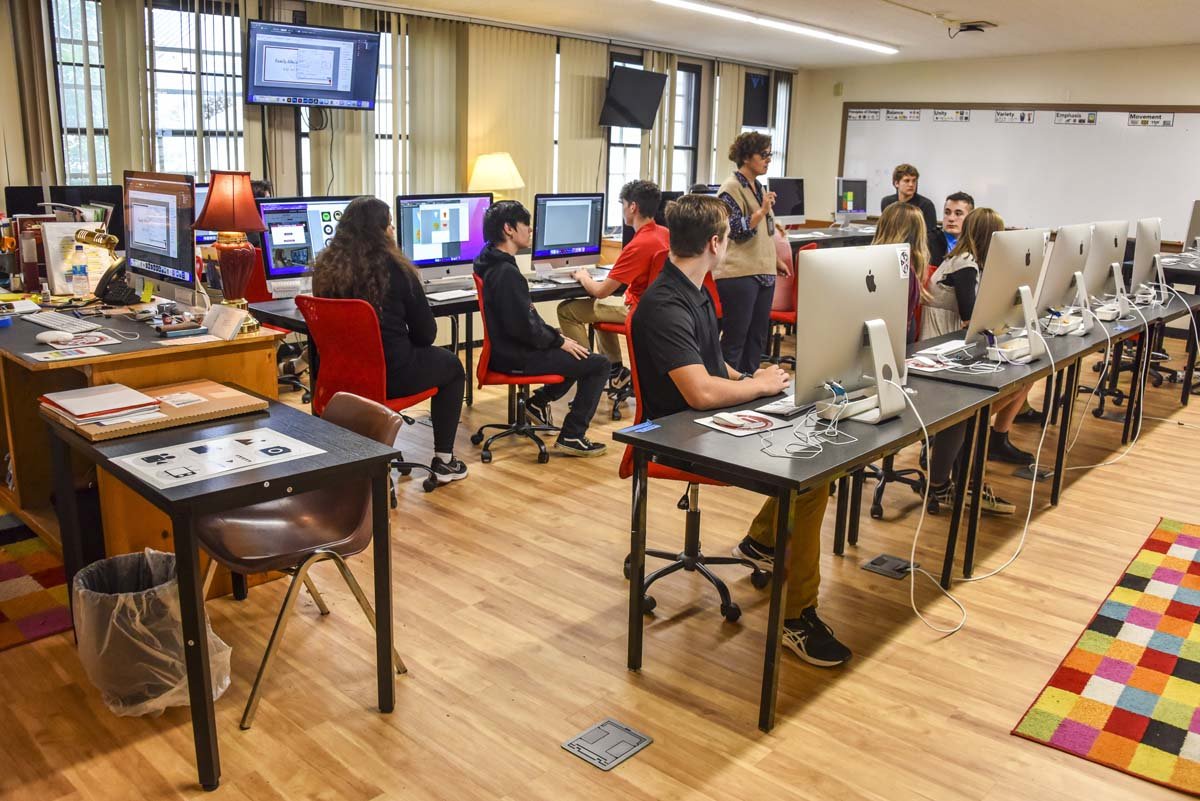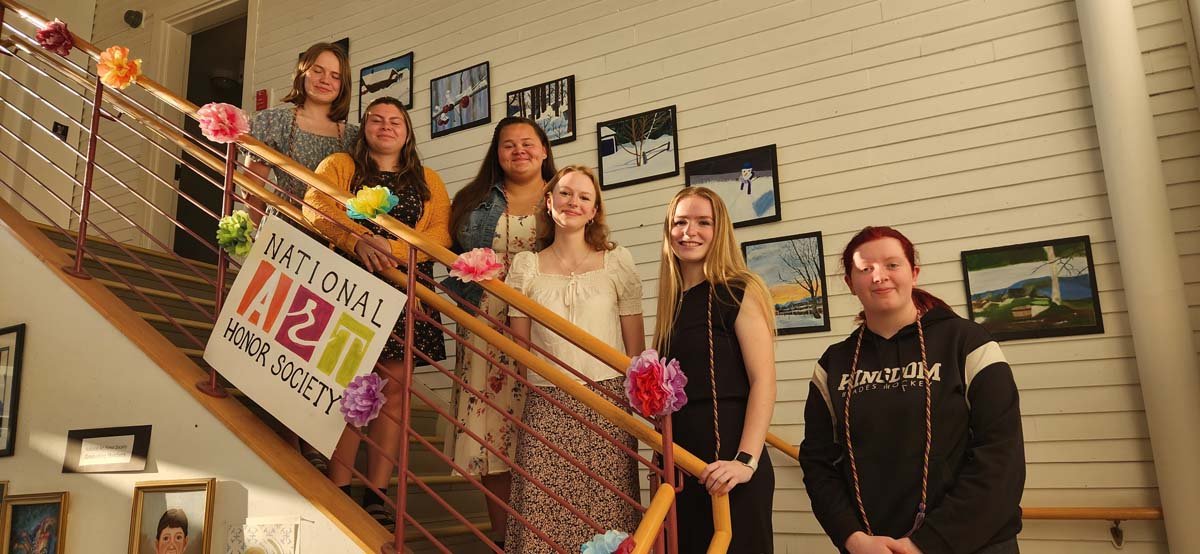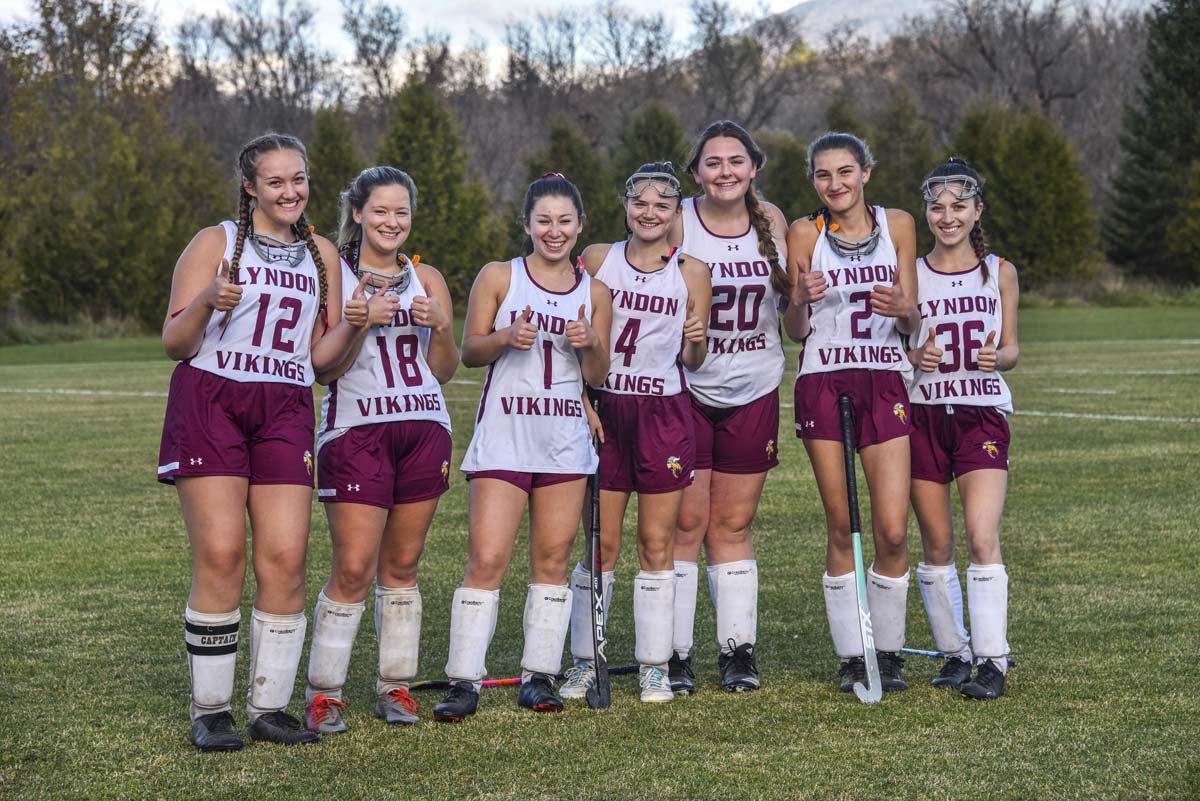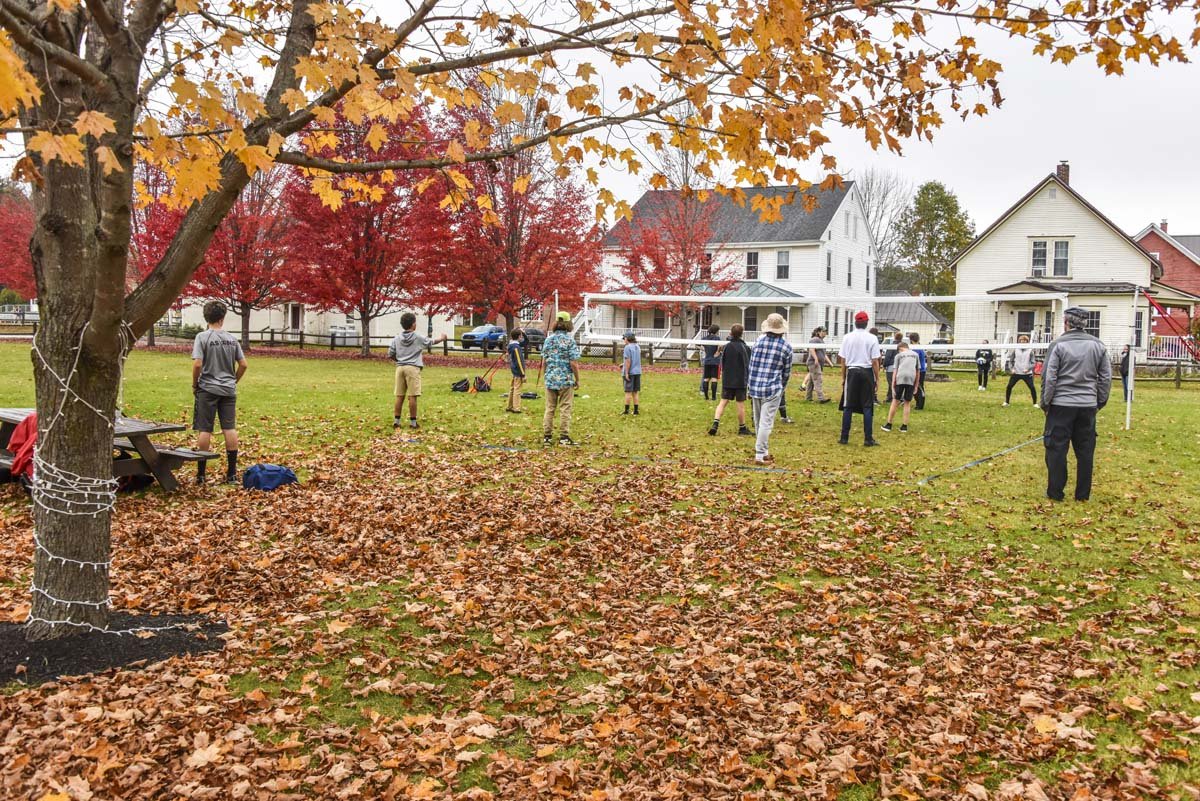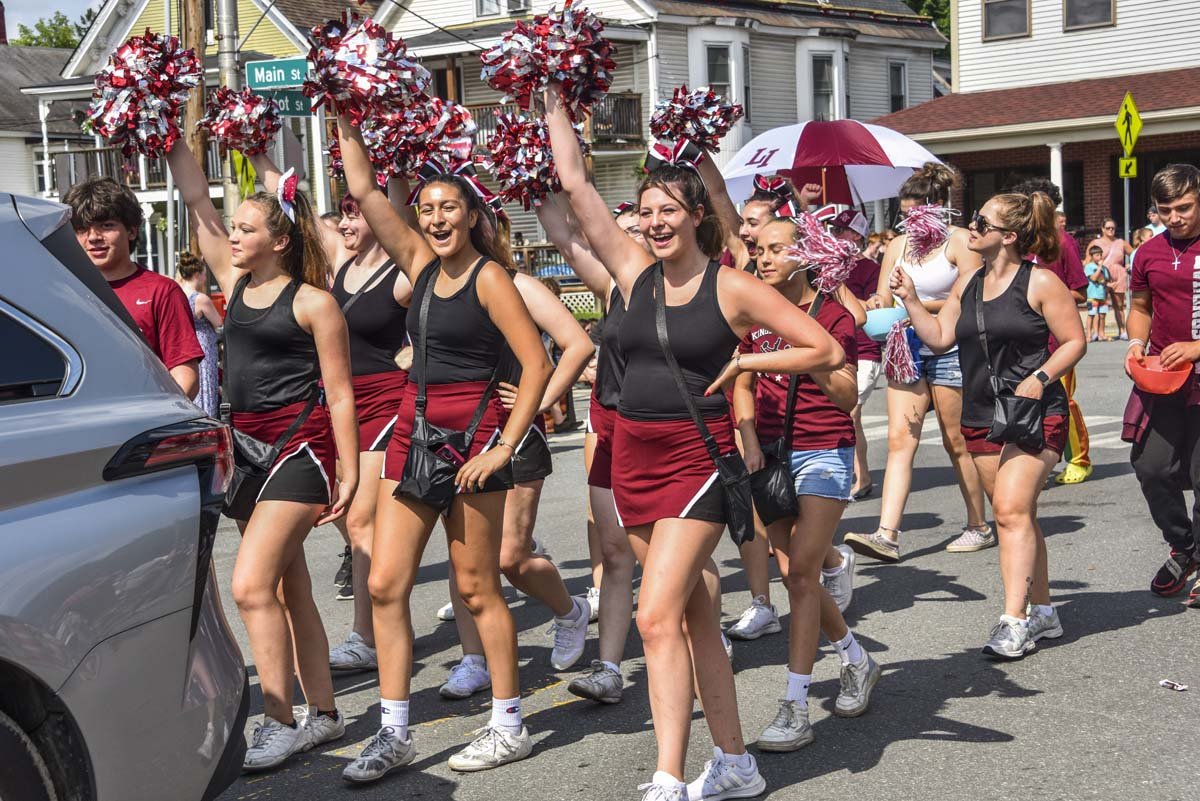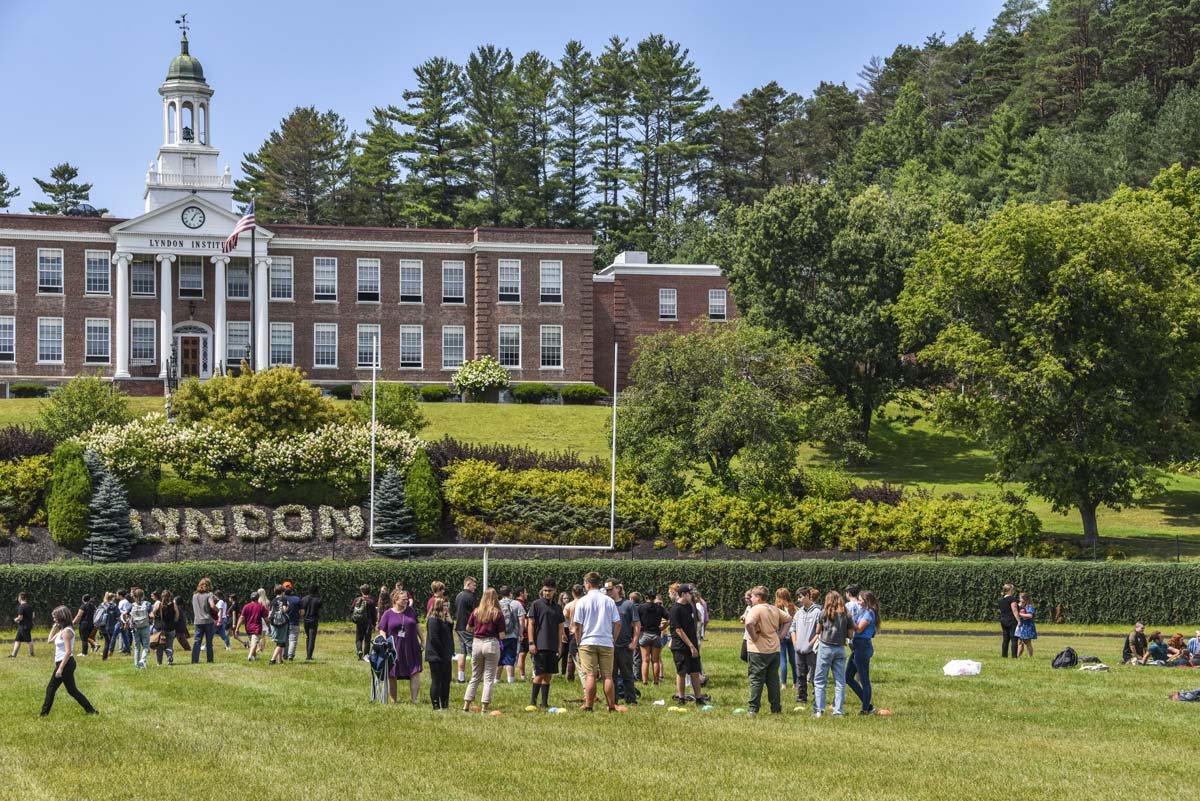- Our School
- Admissions
-
Academics
- Divisions and Faculty
- Commencement 2024
- January Term
- International Program (ESOL)
- College and Career Counseling
- Upward Bound
- Library/Monahan Academic Commons
- Career/Technical Education
- Lyndon Learning Collaborative
- Flexible Lyndon Institute Pathways (FLIP)
- Specialized Instruction
- Adult Continuing Education
- Lyndon Institute Course Catalog
- Student Services
- Arts
- Athletics
- Campus Life
- Support LI
- Alumni
« Back
An Invasive Mystery: LI Biology Students Go Out Into the Field For College Credit
September 25th, 2023
An Invasive Mystery:
LI Biology Students Go Out Into the Field For College Credit
By David Stahler Jr.
Lyndon Center, VT - It’s two days after Labor Day, but it feels more like a sultry day in July as students spread out through Lyndonville’s Powers Park, braving the 90 degree humidity in search of leaf samples.
These Lyndon Institute students are conducting field research as part of their dual enrollment college course, BIO 1122: Ecology and Evolution, a course offered through Vermont State University (VTSU) Lyndon and co-taught by LI science teacher Linnzi Furman and VTSU biology professor Alan Giese.
“The project is the first of three labs, each tied into a different unit of study,” Furman explains. This particular unit, focusing on biodiversity, kicks off the course for a very practical reason—green leaves are still in abundance.
Students are searching for four plant species—riverbank grape, pagoda dogwood, tatarian honeysuckle, and Japanese knotweed. The first two are native to the Northeast Kingdom; the latter two are invasive species that have spread rapidly throughout the Kingdom in recent years.
I ask Streeter Middleton, one of the students, the purpose for collecting leaf samples from these four species.
“We’re learning about plants’ defense mechanisms and the difference between native and invasive species,” she tells me. “One of the reasons invasive species are so successful is that they lack natural predators compared to native ones. It gives them a big edge.”
With leaves collected and bagged, the class heads back to LI in time to make sure the samples are labeled and refrigerated for the next day’s processing.
The following day, Professor Giese joins the group in the classroom. Moving from the field to the lab means going from gathering leaves to gathering data. Students examine each leaf, cataloging the percentage of the surface eaten by insects, worms, and snails and recording their information on a spreadsheet, part of a database that includes five years of entries from previous BIO 1122 classes, giving this year’s group an opportunity to contribute to the growing pool of information.
During this process, Furman and Giese circulate through the room, encouraging students to work together if they’re unsure of their leaf assessments and offering help as needed. For the most part, things go smoothly; students were trained before the lab on how to assess the leaves.
“Some of my leaves don’t have any holes,” Maida Stahler observes, wondering how that fits into the process.
“That’s not a bad thing,” Furman assures her. “It just becomes part of the data.”
“Should I count the brown ones?”
“Nope. Ignore brown or splotchy leaves. Only count missing plant matter.”
Data collection can often be seen as a dry exercise. But sometimes, science throws us a curveball. In the midst of the lab, a mystery unfolds—some unblemished leaves a few students put into the fridge yesterday have come out riddled with a labyrinthine pattern of holes. Even Furman confirms that they were not like that before going into the refrigerator. Who—or rather what—ate those leaves?
Giese and Furman talk through the mystery with the pair of students, puzzling over the lack of any sizable organisms in the bag or any waste product that should be present after such a large consumption of plant matter. Giese notes that he’s left leaves in a refrigerator for weeks without issue.
In the midst of the data processing, Giese stops the lab, gets everyone’s attention, and explains what has happened. He seems animated.
“So here’s where we are,” he concludes. “In science, the best thing you can hope for is for observations that don’t come out the way you expect. We should be excited when we see something we didn’t anticipate! Science is all about how you learn and how you seek out the opportunity to learn. There is a sweet spot between total clarity and not having a clue. Hopefully, we’re in that spot.”
They spend a little bit of time hypothesizing. Perhaps there is an internal parasite? Were the leaves compromised and they didn’t know it? Did the coldness of the refrigerator stimulate some oragnism’s feeding, similar to autumn’s chill? Giese points out that knotweed is very sensitive to cold.
He tells them to still record the leaves—it is part of the data after all. “We didn’t imagine it,” he says. “We might struggle to explain it, but that doesn’t mean it didn’t happen.”
They discuss trying to replicate the process—photographing the leaves beforehand to capture the exact change in consumption. Giese floats the idea of returning to Powers Park to collect a few more samples. One of the teachers at the college is a plant pathologist and might be able to shed some light on the mystery.
Mystery aside, the work goes on. Students finish entering their data as Furman and Giese go around to check that it’s entered correctly. Later on they’ll analyze the results.
Class ends with a few leaves placed under a scope whose digital camera is connected to a large TV. Students’ eyes widen at the sight of a small army of tiny insects squirming along the surface of the leaf, the green field on the monitor a microcosm of insects, eggs, and shed skins.
Giese has been co-teaching BIO 1122 at Lyndon Institute for ten years. While Furman is the primary “in-house” instructor, focusing on the lecture side of class, Giese oversees the lab component.
“It’s a win-win-win,” he says of the dual enrollment program. “It’s good for LI in terms of being able to offer their students this kind of college experience. It’s good for the students, who get to walk away with actual college credits that they can go on to use later, and it’s great for the college.”
He explains that the data shows that LI students—particularly those who participate in LI’s dual enrollment program, the Lyndon Learning Collaborative—are among the best students at VTSU, with some of the highest GPAs and the highest retention rates.
“Personally, I love it. It gives me a chance to work with high-flying, motivated students. When I was in high school in Binghamton, New York, I had the chance to take college courses through the community college that came to our campus, and it turned out to be a really great experience for me. It’s an opportunity that opens a lot of doors for students, especially ones who might be on the fence about going to college.”
Furman also enjoys the partnership. “Alan is a co-teacher, but he’s also a mentor.” Furman—who has a degree in chemistry from Bates College in Maine and who focused on molecular biology while pursuing a masters in biochemistry from Montana State University—appreciates the chance to work with a peer who can deepen her knowledge of another branch of their discipline.
“Really, we learn from each other,” Giese says. “My background is in larger systems, so when we teach Cells and Genetics (BIO 1121) in the spring semester, I can lean on her a little. I’ve also learned a lot of helpful pedagogical approaches from Linnzi, techniques I can carry over into my other courses at the college.”
When it comes to working with high school students in the dual enrollment setting, Giese says that he has learned to adapt, a fitting mindset for a class called Ecology and Evolution.
Posted in the category Front Page.

